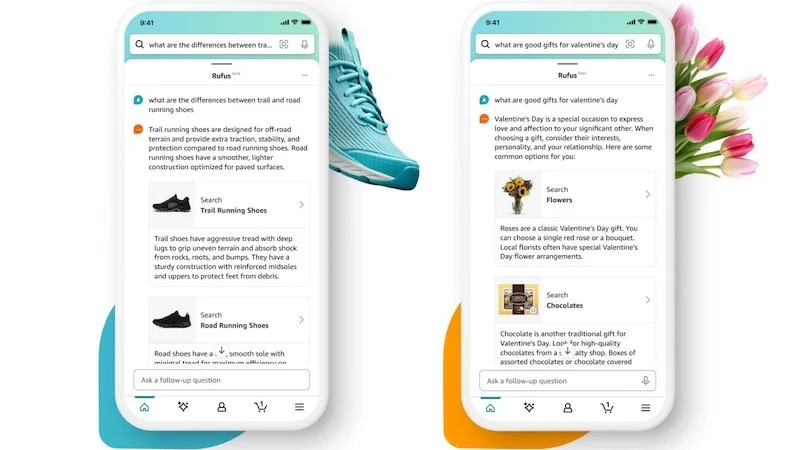Four must do strategies to integrate technology into business operations
It’s no surprise that AI is reshaping the way businesses operate even at this very second. But does that mean for you to also hop on the bandwagon and implement it just because your competitors are?
Well, the answer could be a yes or a no, depending on the type of business operation you seek a solution to.
Because every business operation at every phase of a product, or marketing lifecycle calls for a unique solution. So while you must leverage the trending tech tools available in the market, you first need the know-how of them.
Let’s also not discard the decision-making fatigue into account given the overwhelming amount of tech solutions available today. You’ll easily get a hundred ways to streamline your fleets or your recruitment process.
Through this article, we intend to aid you in your decision-making by listing four must-implement strategies to integrate technology into your business.
Before doing so, you need to assess your current tech setup.
Assess the present tech setup
Similar to financial audits, auditing your current tech setup gives you specific areas for improvement.
It includes -
● Performance evaluation of management/performance monitoring software or tools
● Verifying data privacy and security measures
● Reviewing AI tools' performance
The reason to conduct these reviews is to identify weaknesses in your current systems. (if you haven't leveraged any tool yet, don't fret. We'll look into four specific strategies going forward).
After you realise the gaps post analysing the audit report, you get an exact list of business needs that call for a better solution.
For instance, if you already have a fleet management system in place but you identify there’s an increase in vehicle service costs. Knowing this fact opens up new routes. Probably investing in battery intelligence software is smart you may think, or going for a system that has an inbuilt battery intelligence tool.
Tip: Create an audit checklist before conducting the audit to ensure it is smooth.
Getting to the strategies.
Four strategies to integrate technology into business
The strategies covered here come in handy for managers ranging from the automotive industry to the tech and marketing industries.
1. Use fleet work order template
If you're finally done with filling spreadsheets, and paper forms, it's time to find you a work order software for your fleet.
Why? To make an otherwise lengthy process of issuing and finishing work orders simple.
Let’s look at the typical workflow of a fleet manager without a work order template.
Scenario: Vehicle/s need servicing.
The vendor calls the manager to inform so
The manager calls the concerned person (mostly technicians) to look into the matter and get it done
If it's a giant fleet management system, the technician calls up another technician who manages this specific segment and location
Assuming the calls weren't missed and there was absolutely clear communication between all three parties, the work gets done
A long long process indeed. Not the most reliable one either.
Cut down this four to five step process to a single-step method by incorporating a fleet work order template. Monitor and manage hundreds of vehicles (with accuracy) with such templates. Through them, the technicians know about the vehicle part/s that need repairs, vehicle services overdue, vendors for which they're supposed to repair vehicles, and much more.
Go for a customisable template so that you can edit the fields as per your business requirements.
How do these templates benefit you?
● Streamline fleet maintenance
● Streamline repair workflows
● Build detailed service histories
● Gain control of service spend
● Say goodbye to incessant calls, messages, and emails to the technician/s
● Clear communication (as all the involved parties have access to the template and know what they’re supposed to do)
● Saves time
Along with in-house tracking of vehicles, you also get to track outsourced maintenance, providing you with a holistic fleet maintenance system.
You get access to all work orders along with their status. So in case you see a 'pending' status to a work order, you know the next step of action.
Look up the templates available in the market, customize them as per your requirements, and automate your workflows.
To take fleet management a notch higher, invest in battery intelligence software.
2. Invest in battery intelligence software
As a fleet manager, you want to streamline as many workflows as possible. Sure, vehicle tracking is one of the must-have tech solutions. However, adding battery intelligence software optimises the lifespan of the vehicles’ batteries, eventually reducing energy wastage and service costs.
Through battery intelligence software, you get access to data from a single, centralised place of truth. Streamlining hence, becomes even simpler as you now have all data related to the health of vehicles in a single screen.
The benefits?
● Saves time and costs over time as the longevity of vehicles increases
● Gets repairs done quickly
● Environment friendly
● Prevents thermal events or battery hazards
● Informed decision-making with regard to expanding fleet, charging infrastructure, etc.
Along with an extended battery life span and improved fleet maintenance, it also prevents thermal events from occurring.
The elements in EV batteries cause a combustive reactive sequence, resulting in fires. Use Elysia’s battery intelligence software as they understand, monitor, and generate actionable insights to reduce the risk of such hazardous incidents.
The ideal investment?
Invest in both–work order templates and battery intelligence software. Integrate both with your existing fleet management system for maximum output.
Add on: Using battery intelligence software is also CSR-friendly since it enhances efforts toward sustainability by reducing energy wastage (gives you an edge over your competitors by positioning your business as sustainable.)
3. Integrate chatbots to automate customer interactions
61% of small businesses say over half their revenue comes from repeat customers.
A repeat customer in another term is a satisfied customer. The easiest way to lose this shot is to keep their queries on hold when they visit your website for the first time; which is frequent with human assistants.
This is where usability testing tools can step in and aid you in identifying your customers’ patterns and click data, which will then serve to help them navigate through your website and/or products, and get to their answers quickly. Ideally, you want to cater to all customer questions.
However, realistically, you may end up losing them unless you have chatbots and good UX/UI to tackle first-level customer interactions.
Only after the user gets answers to their questions do they choose to click on that product page you want them to click. Moreover, it’s the first step to building a relationship with your customer. The role of technology is pivotal, especially in strengthening customer relationships. And using chatbots is just one of the many ways.
The founder and CEO of Trio SEO, an agency based in the US,, Connor Gillivan shared how using chatbots has helped them reach lots of customers.
"We can put energy towards planning instead of making reports. Also, we use chatbots and tech that talk to help folks with common questions, freeing our team for bigger picture projects. Bots handle FAQs nice and easy, questions on costs, capturing leads, making meetings, and more. The result? We can help lots of customers well without losing quality.”
With the right tech setup, businesses can scale up fast while giving top-notch customer service. The key is picking solutions that fit and strengthen your team.
4. Optimise marketing with data analytics tools
By now, all marketers are aware that data analytics is more than a buzzword. The real challenge, however, is to use this data set in the right way.
What’s the right way?
Different digital campaigns serve different purposes. Depending on whether it targets the audience in the ToFu, MoFu, or BoFu segment. The metrics to measure the campaign's success also differ.
For example, a campaign to generate brand awareness needs impressions as one of the top parameters to know its success.
A campaign intending to redirect a user to a specific webpage requires a strong click-through rate (CTR).
The one intending to convert users requires tracking the user’s entire journey.
This is why you should invest in a data analytics tool.
How to choose one?
Evaluate the tool’s visualisation, data integration, and ease of use. You can always opt for multiple tools based on your requirements.
Go through the list of the best analytics software to compare and choose the best.
Identify, manage, and implement
The strategies mentioned here give you a clear roadmap to integrating tech in your business operations.
The next most important step is to check for the compatibility of the implementation with your existing setup. Check the associated risks and proactively work to mitigate them.
To sum it up -
● Identify the strategies that may benefit you at specific product lifecycles.
● Manage risks associated with it
● Implement it
If you feel the need for a professional push, reach out to professionals for better guidance before implementing any strategy.
Author bio:
Parita Pandya is an engineer turned writer. She usually finds herself writing for businesses. When she is not writing, she is either strumming her guitar or penning her thoughts down on paritapandya.com.



































Continue reading…